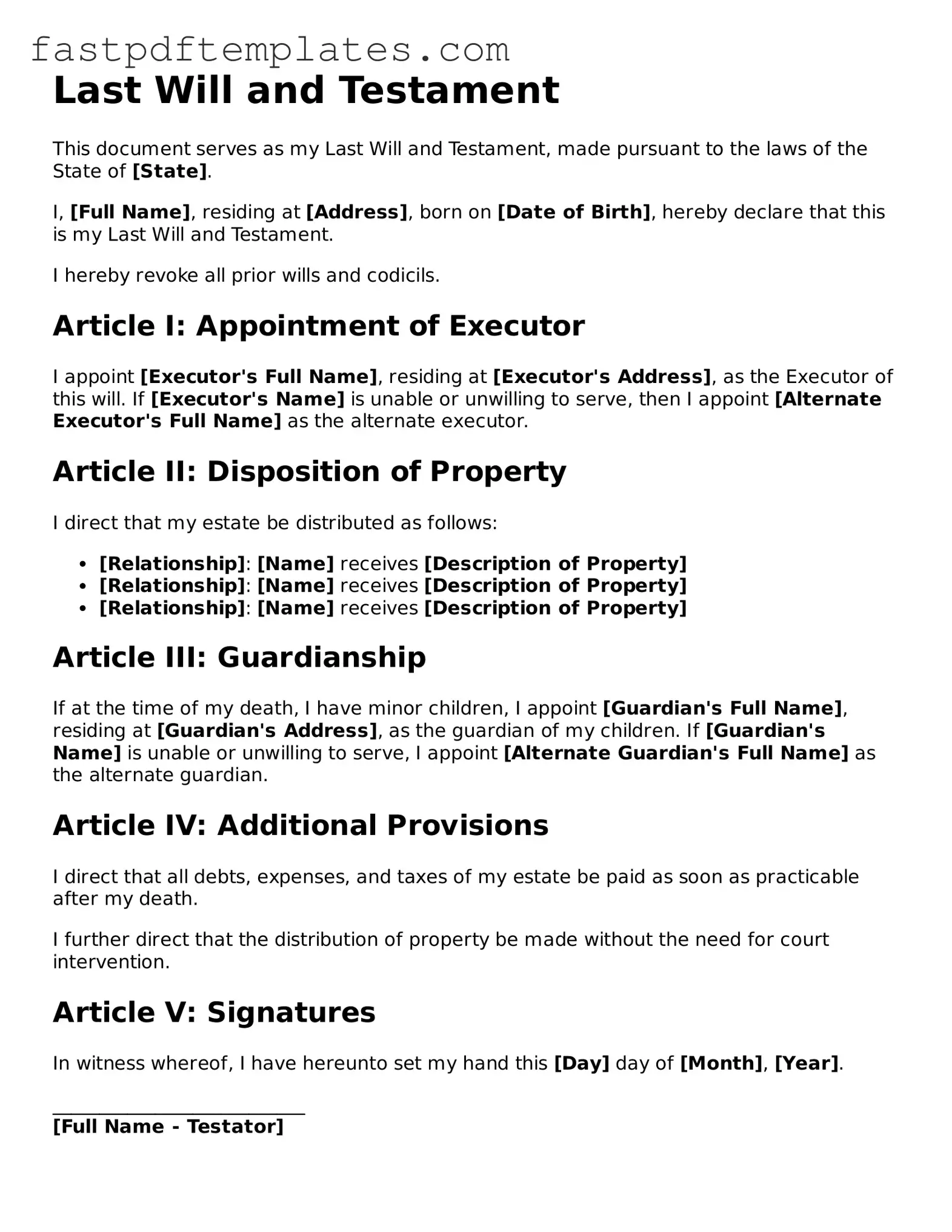Last Will and Testament
This document serves as my Last Will and Testament, made pursuant to the laws of the State of [State].
I, [Full Name], residing at [Address], born on [Date of Birth], hereby declare that this is my Last Will and Testament.
I hereby revoke all prior wills and codicils.
Article I: Appointment of Executor
I appoint [Executor's Full Name], residing at [Executor's Address], as the Executor of this will. If [Executor's Name] is unable or unwilling to serve, then I appoint [Alternate Executor's Full Name] as the alternate executor.
Article II: Disposition of Property
I direct that my estate be distributed as follows:
- [Relationship]: [Name] receives [Description of Property]
- [Relationship]: [Name] receives [Description of Property]
- [Relationship]: [Name] receives [Description of Property]
Article III: Guardianship
If at the time of my death, I have minor children, I appoint [Guardian's Full Name], residing at [Guardian's Address], as the guardian of my children. If [Guardian's Name] is unable or unwilling to serve, I appoint [Alternate Guardian's Full Name] as the alternate guardian.
Article IV: Additional Provisions
I direct that all debts, expenses, and taxes of my estate be paid as soon as practicable after my death.
I further direct that the distribution of property be made without the need for court intervention.
Article V: Signatures
In witness whereof, I have hereunto set my hand this [Day] day of [Month], [Year].
___________________________
[Full Name - Testator]
We, the undersigned witnesses, hereby declare that the above-named testator signed this Last Will and Testament in our presence and we attest to the signing by our signatures below:
- ___________________________
[Witness 1 Name] [Witness 1 Address]
- ___________________________
[Witness 2 Name] [Witness 2 Address]
This will shall be regulated according to the laws that govern such documents in the State of [State].
